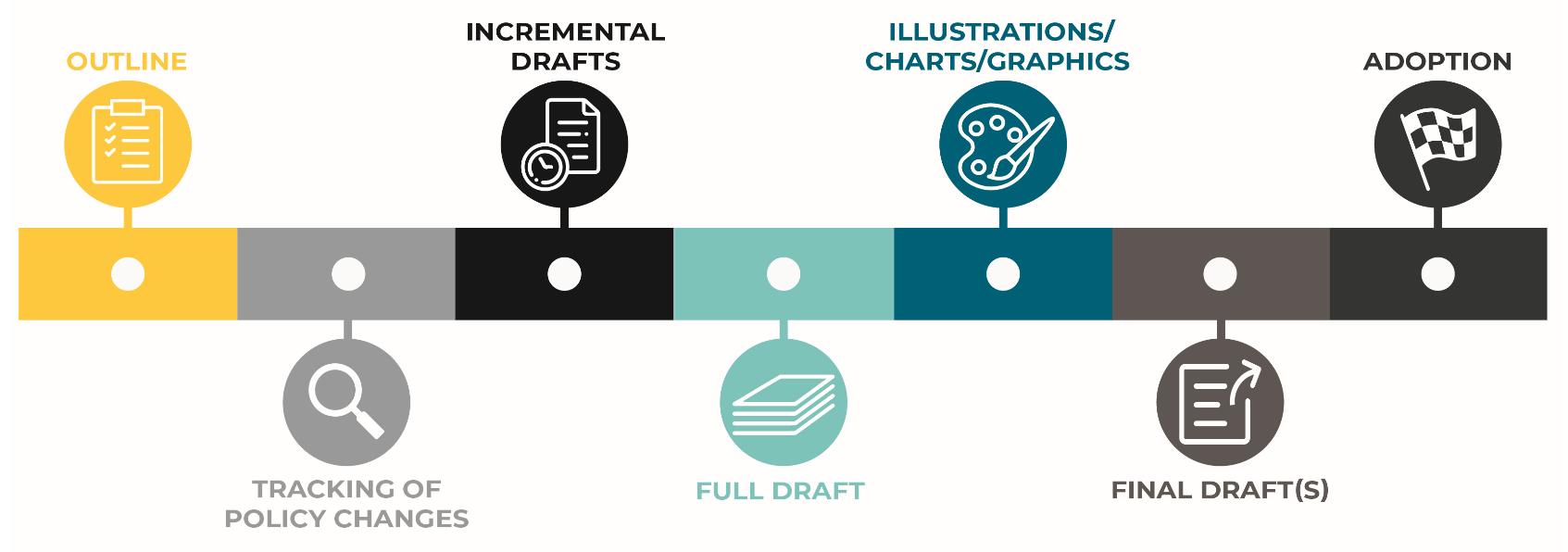When it comes to understanding the full impact that zoning ordinances have on a community’s long-term planning efforts, CPL Planner, Rebecca Keefer, AICP, is an excellent go-to resource. With more than a decade of experience in community planning, design development, visioning, master planning and public engagement, Keefer is well equipped to develop effective ordinances for any community’s planning documents.
Zoning ordinances play a significant role when implementing a community’s long-term planning efforts. As a critical follow-up to a set of planning documents, these rules help define how properties within specific zones can be developed. In doing so, they become very effective in directing private investments, helping communities achieve their desires and visions for growth.
The only thing worse than a set of ordinances that do not move a community toward its vision are ordinances that are contrary to it. Whether communities are in need of a full ordinance rewrite or more simple incremental changes, there are critical steps you should take to develop an effective zoning ordinance.

1. Analyze Current Ordinances
Where are your community’s strengths and weaknesses? Are there components working against your planning vision?
Identify these components and seek to understand what’s not being addressed in your ordinances today. Augment your regulations to guide private developments in a way that might not have been considered a “best practice” when your code was first written.
Additionally, identify the components that should be retained. Codes often tell a story and can be reactions to issues from the past. Make sure you’re not writing those important vestiges out of your code with a complete rewrite. Pinpoint those sections early and verify that they are included in the drafts.
2. Make Policy Recommendations
Policies can be very effective at communicating illustrative visions for the future growth of a community. Develop a set of general recommendations that assist in translating the visioning documents into regulatory language. For example, if walkability is important to your community, identify policies that support a walkable district (i.e. access management, wide sidewalks, mix of uses, street trees and lighting, maximum block dimensions, etc.).
3. Create Organized Outline
The best zoning ordinances are always thoughtfully organized and numbered. But what’s the big deal with numbering ordinances anyway?
Have you ever had to make one small tweak to your ordinance text, and as a result had to re-number the remaining half of the document? How about cutting a section for a plan review? Are the section numbers duplicated, requiring a long string of article, title, and division of numbers to properly identify the relevant section?
That’s why numbering is essential. Determine an intuitive hierarchy of ordinance sections based on your community’s priorities with an expandable numbering format.
4. Draft and Review Ordinances
Once drafted, release the ordinances to your elected community officials. Work with your legal team to mitigate risks and test the ordinances on real situations to understand how they would work as applied. You’d be surprised to learn just how many issues you can flesh out by giving ample consideration to how they would work on real development.
Allow all stakeholders to provide meaningful feedback on the projected impacts—that’s residents, developers, builders, community groups, etc. They all play an important role in this process.
5. Manage the Transitions
Develop easy-to-use guidelines, flow charts and code-user trainings that outline major ordinance changes and new directions. Above all, never consider your work with zoning ordinance fully complete. Maintain the ordinances over time through regular and periodic updates to keep them current and effective.

Good zoning ordinances and codes are the foundations upon which great communities are built. When done well, they become the framework that regulates future development and they make it easier for a community to implement its vision.

